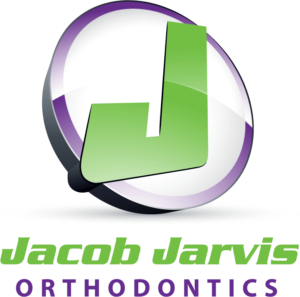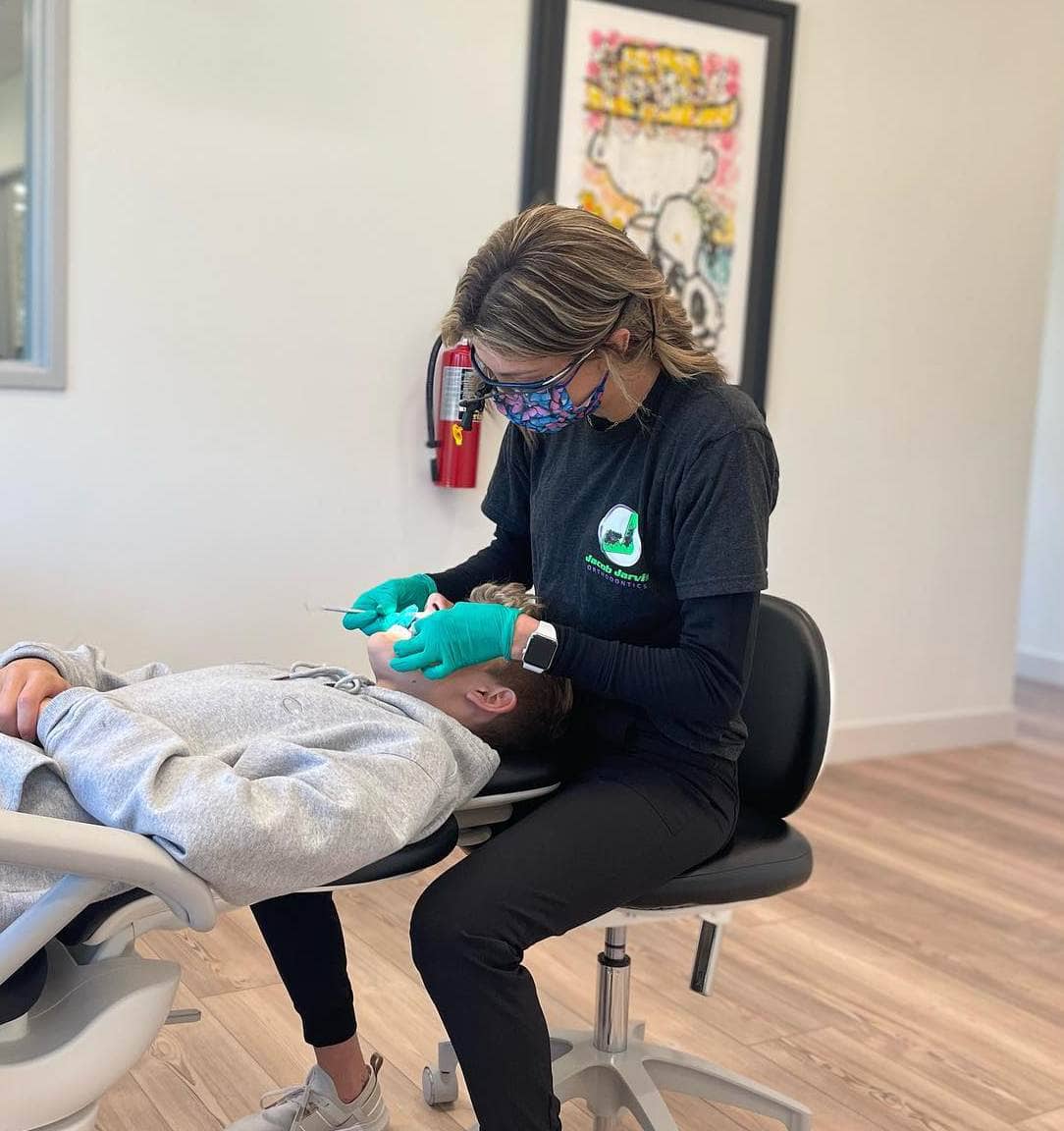TMJ pain can be a real downer. It can cause discomfort in your jaw and lead to headaches, earaches, and difficulty chewing – making even the simplest meals a chore. But fear not! TMJ pain doesn’t have to control your life. Understanding the causes and incorporating these 5 key strategies into your routine can significantly reduce your risk of TMJ pain and keep your smile healthy and happy.
Understanding TMJ
The temporomandibular joint, often abbreviated as TMJ, is indeed a marvel of engineering. It’s the hinge that connects your lower jawbone (mandible) to your skull on either side, just in front of your ears. Unlike a simple hinge, the TMJ allows for a surprising amount of movement – it can slide forward, backward, and side-to-side, and it can hinge up and down. This intricate design is what allows us to perform essential functions like:
- Chewing: The sliding and hinging motions of the TMJ break down food into manageable pieces for swallowing.
- Talking: The TMJ works in conjunction with the muscles of the face and tongue to allow for clear and precise speech.
- Yawning and Stretching: The TMJ’s wide range of movement allows us to open our mouths wide for yawning and stretching.
The TMJ’s Inner Workings:
Each TMJ is a complex structure made up of several key components:
- The bones: The mandible (lower jawbone) and the temporal bone (part of the skull) meet at the TMJ.
- The condyle: This is the rounded end of the mandible that fits into a socket in the temporal bone.
- The articular disc: This acts like a cushion between the condyle and the socket, ensuring smooth movement.
- The ligaments and muscles: A network of ligaments and muscles surrounds the joint, providing stability and allowing for controlled movement.
When Things Go Wrong: TMJ Dysfunction Explained
TMJ dysfunction is a blanket term for a variety of conditions that affect the TMJ, the muscles surrounding it, and the associated nerves. While the exact cause of TMJ dysfunction can vary, some common culprits include:
- Inflammation: Inflammation of the muscles, ligaments, or the joint lining itself can cause pain and stiffness. This inflammation can be caused by overuse, injury, or even autoimmune diseases.
- Disc Issues: The articular disc can become displaced or damaged, leading to pain and limited jaw movement.
- Teeth Grinding (Bruxism): Clenching or grinding your teeth can put excessive stress on the TMJ and lead to pain and dysfunction.
- Arthritis: Degenerative joint diseases like osteoarthritis can affect the TMJ, causing pain and stiffness.
Symptoms of TMJ Dysfunction:
The most common symptoms of TMJ dysfunction include:
- Pain in the jaw, face, or around the ear
- Difficulty chewing or opening your mouth wide
- Clicking or popping sounds in the jaw
- Headaches
- Earaches
- Facial swelling
TMJ dysfunction is a complex issue, and the information provided here is for educational purposes only. If you’re experiencing any TMJ pain or symptoms, it’s important to consult with an Orthodontist or doctor for proper diagnosis and treatment.
5 Ways to Find TMJ Pain Relief and Keep Your Smile Healthy
TMJ pain can be a constant ache, making even simple tasks like smiling or chewing uncomfortable. But there’s hope! By understanding the root causes of your TMJ pain and incorporating these 5 key strategies into your routine, you can significantly reduce discomfort and find lasting TMJ pain relief.
1. Mind Your Habits: Breaking the Cycle of Tension
Clenching your jaw, unconsciously chewing on pens, or nail biting – these seemingly harmless habits can wreak havoc on your TMJ. They put undue stress on the joint and its surrounding muscles, leading to pain and inflammation.
The key to breaking these habits is awareness. Often, we clench our jaw or chew on objects without even realizing it. Pay attention to how you hold your jaw throughout the day. Are you subconsciously clenching when stressed or focused? Do you find yourself chewing on a pen during a meeting? Once you identify these triggers, you can take steps to interrupt the habit.
Here’s where TMJ pain relief comes in:
- Deep Breathing: When you catch yourself clenching, stop and take a few slow, deep breaths. Focus on relaxing your jaw muscles with each exhale.
- Jaw Stretches: There are gentle stretches you can do throughout the day to help loosen tight jaw muscles and promote relaxation. A dentist or physical therapist can recommend specific stretches for your needs.
- Biofeedback: This therapy uses electronic devices to help you become more aware of muscle tension. By seeing your muscle activity in real-time, you can learn to consciously relax them and prevent TMJ pain flare-ups.
2. Manage Your Stress: Untangle the Tension Knot
Stress is a major player in TMJ pain. When we’re stressed, our bodies go into “fight-or-flight” mode, causing muscles to tense up, including those in the jaw. This chronic tension can lead to inflammation, pain, and limited jaw mobility.
TMJ pain relief strategies through stress management include:
- Relaxation Techniques: Incorporate practices like meditation, yoga, or progressive muscle relaxation into your daily routine. These techniques can help to calm your mind and body, reducing overall tension and preventing TMJ flare-ups.
- Mindfulness: Practice mindfulness throughout the day. Pay attention to your thoughts and feelings, and learn to let go of worries that contribute to stress.
- Cognitive Behavioral Therapy (CBT): If stress management proves difficult, consider seeking help from a therapist specializing in CBT. CBT can help you identify and change negative thought patterns that contribute to stress and anxiety, leading to overall TMJ pain relief.
3. Posture Powerhouse: Aligning for TMJ Pain Relief
You might be surprised to learn that poor posture can significantly contribute to TMJ pain. When you slouch, your entire body is thrown out of alignment, putting a strain on your jaw joint and the muscles that support it.
Here’s how good posture promotes TMJ pain relief:
- Sit Up Straight: Maintain good posture throughout the day by sitting up straight with your shoulders back and head held high. Imagine a string gently pulling the crown of your head towards the ceiling.
- Ergonomics Matter: Set up your workspace ergonomically to encourage good posture. Ensure your chair is at the right height, your monitor is at eye level, and your keyboard and mouse are within easy reach.
- Be Mindful on the Go: Pay attention to your posture while standing and walking. Avoid slouching and hunching your shoulders.
4. Splint Solutions: A Physical Barrier for TMJ Pain Relief
If you grind your teeth at night (bruxism), a dentist-made splint can be a game-changer for TMJ pain relief. Bruxism puts immense stress on the TMJ and its surrounding structures, leading to pain and inflammation.
A custom-fitted splint acts as a physical barrier between your upper and lower teeth. It prevents them from grinding together, reducing the stress on your TMJ and promoting better sleep. This, in turn, can significantly reduce TMJ pain and help prevent future problems.
5. Jawsome Exercises: Gentle Movements for TMJ Pain Relief
Gentle jaw exercises can be a powerful tool for improving mobility, reducing pain, and promoting long-term TMJ pain relief. These exercises help to stretch and strengthen the muscles around the jaw joint, improving flexibility and reducing inflammation.
Here’s the key to TMJ pain relief through exercise:
- Seek Professional Guidance: Don’t jump into random jaw exercises! Consult with a dentist or physical therapist who can recommend specific exercises tailored to your needs and ensure you perform them.
- Apply Heat or Ice: Applying a warm compress to the affected area for 15-20 minutes a few times a day can help relax muscles and alleviate pain. Conversely, applying ice packs for short intervals can also help to reduce inflammation and pain.
- Pain Relief Medication: Over-the-counter pain relievers like ibuprofen or acetaminophen can help to manage TMJ pain, especially during flare-ups. However, it’s important to consult with your doctor before taking any medications, especially if you have any underlying health conditions.
- Dietary Adjustments: If you suspect that certain foods are triggering your TMJ pain, consider making some dietary adjustments. For example, avoiding chewy or hard foods that require excessive jaw movement can help to reduce strain on the joint.
See an Orthodontist:
If you’re experiencing persistent TMJ pain, don’t hesitate to schedule an appointment with your Orthodontist. An Orthodontist can diagnose the underlying cause of your TMJ dysfunction and recommend the most effective course of treatment for lasting TMJ pain relief. This may include medication, physical therapy, or a combination of approaches.






